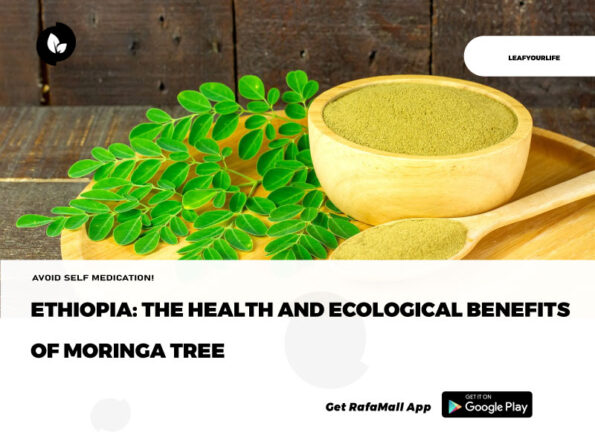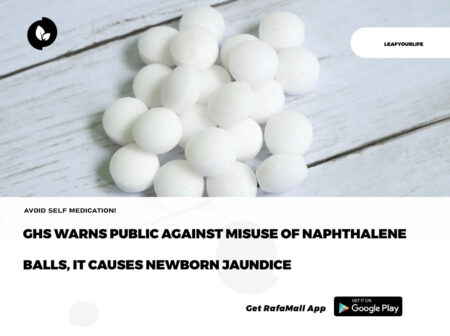
In southern Ethiopia, Moringa is a daily meal from breakfast to dinner. Known locally as Halako or Sheferaw, Moringa has many health benefits, according to various studies. The plant is drought-tolerant in nature and grows mostly in lowland areas.
Many studies conducted worldwide have confirmed that Halako (sheferaw) has many health benefits. The leaves of Moringa are considered to be a rich source of vitamins and minerals and exhibits strong antioxidant activity, often attributed to the plants’ vitamins and phenolic compounds such as quercetin and kaempferol. The leaves can be also taken as vegetable and processed into tea, powder and other pharmaceuticals purpose.
According to Japanese study in 2009, leaves act as a good sink for carbon dioxide absorption and utilization. The rate of assimilation of carbon dioxide by Moringa tree is 20 times higher than general vegetation. Moringa is said to provide 7 times more vitamin C than oranges, 10 times more vitamin A than carrots, 17 times more calcium than milk, 9 times more protein than yoghurt, 15 times more potassium than bananas and 25 times more iron than spinach. Further more, juice can be extracted from fresh leaves and act like growth hormone and increase crop yield by 25-35%.
Moringa oleifera has several medicinal properties and has the potential to cure many diseases. It is used to treat diseases such as diabetes, heart disease, anaemia, arthritis, respiratory problems, skin, liver problems, paralysis, sterility, rheumatism, digestive disorders and many more.
In India, it was named the ‘plant of the year’ in 2008 by the National Institute of Health and Family Care. In many African countries, it is also used for the treatment of ascites, pneumonia and venomous bites.
According to various research, the leaves are said to be anti-fungal, anti-viral, anti-abortifacient, and act as flocculating agent and stimulants. Moringa powder can be used as a substitute for iron tablet, hence a treatment for anaemia. The health benefits of this wonderful tree appear to be boundless. Apart from all the goodness discussed
Moringa strongly supports mental health and boost cognitive power due to its antioxidant and neuro-enhancer activities. It has shown several preliminary result as a treatment of Alzheimer’s disease. The high amount of vitamin C and E helps to improve brain function and also normalize the neurotransmitter in the brain which play a key role in memory, mood, organ function, responses to stimulus such as stress.
Moringa play very crucial role to protect liver against damage, oxidation, toxicity due to high concentrations of polyphenols in its leaves and flowers. Moringa oil can also restore liver enzymes to normal levels, reducing oxidative stress, and increasing protein content in the liver. The liver is responsible for blood detoxification, bile production, fructose metabolism, fat metabolism, and nutrient processing, and it can only fulfill these functions with the aid of liver enzymes, so it’s vital they stay at normal levels. For instance, lower levels of hepatic enzymes can impair its ability to filter the blood.
Moringa oleifera, which can be one of the best option to reduce malnutrition. The Moringa is also considered as important famine food because of its high resistance to drought and arid conditions owing to their tuberous roots.
Furthermore, Moringa is said to provide 7 times more vitamin C than oranges, 10 times more vitamin A than carrots, 17 times more calcium than milk, 9 times more protein than yoghurt, 15 times more potassium than bananas.
The absolute number of people facing chronic food deprivation has increased to nearly 821 million in 2017, from around 804 million in 2016. Due to the incredible character of Morinaga to solve the hunger problem many international humanitarian organization and world health organization (WHO) have used it to combat malnutrition in many parts of the world.
Moringa has antibacterial and anti-fungal properties that fight infections. It’s been effective against types of fungi that cause infections on skin and strains of bacteria responsible for blood and urinary tract infections and digestive problems.
Roots of Moringa oleifera have antibacterial property and are described to be rich in antimicrobial agents. The bark extract of Moringa has been found to have antifungal activities while the juice of the bark and stem exhibit antibacterial effect against Staphylococcus aureus.
Moringa has blood-clotting properties in its leaves, roots, and seeds that benefit wound healing and can reduce clotting time, which means it reduces the time it takes for scratches, cuts, or wounds to stop bleeding.
The Food and Agriculture Organizati
on describes Moringa as a very useful plant with lots of health benefits. Some research has shown that Moringa is a plant that can help in reducing malnutrition among children and women. In the context of Nepal, malnutrition has been serious problem among children and pregnant women.
According to Nepal, Demographic and health survey 2016, 36% of children were stunting, 10% were wasted and 27% underweight. Even though, the scenario is decreasing but not satisfactory and the mortality due to malnutrition is still prevalent in Nepal. So, Moringa oleifera could be a best option to reduce malnutrition problem.
Moringa has abundant amount of calcium which is considered as one of the important minerals for human growth. While 8 ounces of milk can provide 300-400 mg, Moringa leaves can provide 1000 mg and Moringa powder can provide more than 4000 mg.
Hence, can be used as a substitute of anaemia. It has been reported that higher amount of iron is present in Moringa than spinach. A good dietary intake of zinc is essential for proper growth of sperm cells and is also necessary for the synthesis of DNA and RNA.
Moringa Oleifera contains various essential phytochemicals in its leaves, seeds and pods and it is one of the effective remedy for malnutrition. Over 143 million children under the age of five in developing countries were undernourished in 2006. Food insecurity, lack of access to health care social, cultural, and economic class, all play a major role in explaining the prevalence of under-nutrition.
One practical step to compensate for the several unpreventable carbon dioxide emissions is to plant trees. This is because trees take carbon dioxide out of the atmosphere and they release oxygen in return. The type of trees planted will have a great influence on the environmental outcome. According to Japanese study (Villafuerte, and Villafurte-Abonal, 2009) the rate of absorption or assimilation of carbon dioxide by the Moringa tree is twenty times higher than that of general vegetation. The Moringa tree therefore will be a useful tool in the prevention of global warming.
Fresh Moringa leaves can be cooked and eaten as vegetables or processed into tea, powder and other pharmaceutical preparations. Moringa leaves, shoots and seeds can be used as green teas, animal feed with tremendous results.
The World Health Organization (WHO) and other international humanitarian relief organizations have used Moringa to combat malnutrition in many parts of the world. The many medicinal, nutritional, industrial, and agricultural uses of Moringa are well documented. Fahey (2005) said that “the nutritional properties of Moringa are now so well known that there seems to be little doubt of the substantial health benefit to be realized by consumption of Moringa leaf powder in situations where starvation is imminent.” The interest generated from the second international conference held in 2006 in Ghana on the uses of the Moringa tree has been so great that several national Moringa associations have already been formed in African countries.
Moringa is well adapted to most of sub-Saharan Africa, where the world’s worst rates of malnutrition are found. Researches were not done on the multipurpose benefits of Moringa trees in Ethiopia. It has many advantages from environmental, economic and cultural perspectives.
BY MAHLET GASHAW
THE ETHIOPIAN HERALD TUESDAY 23 JANUARY 2024
Read the original article on Ethiopian Herald.











